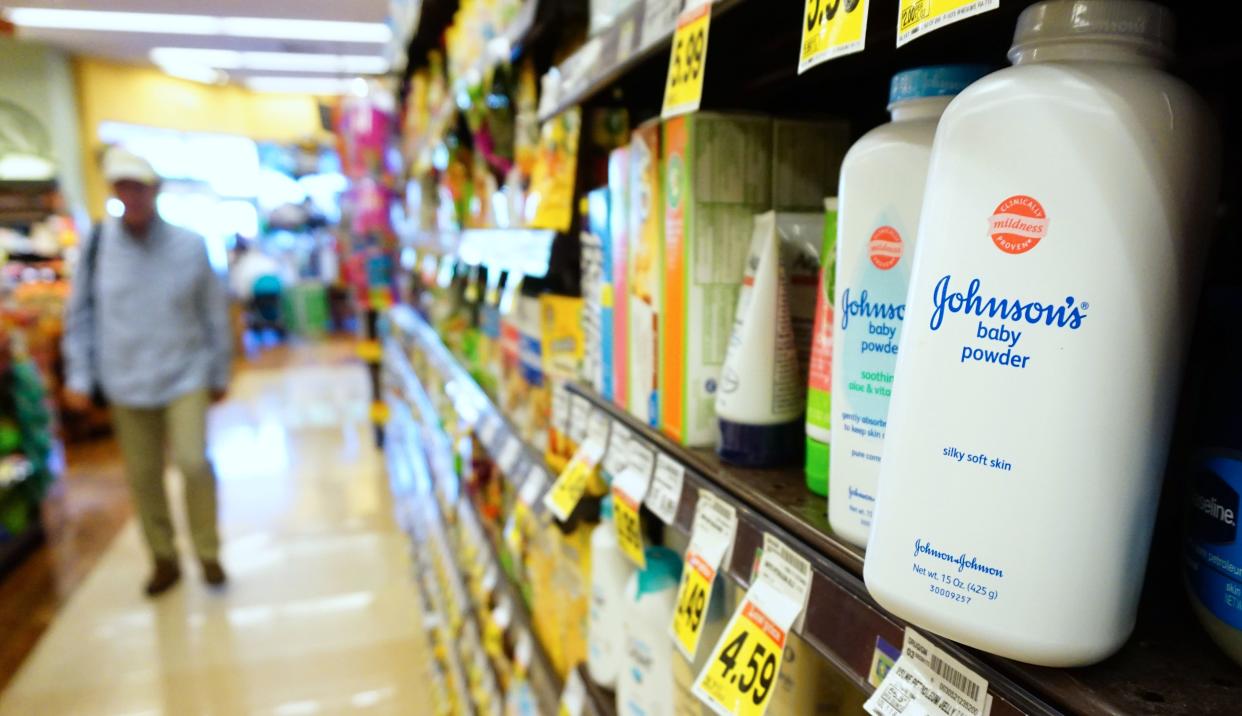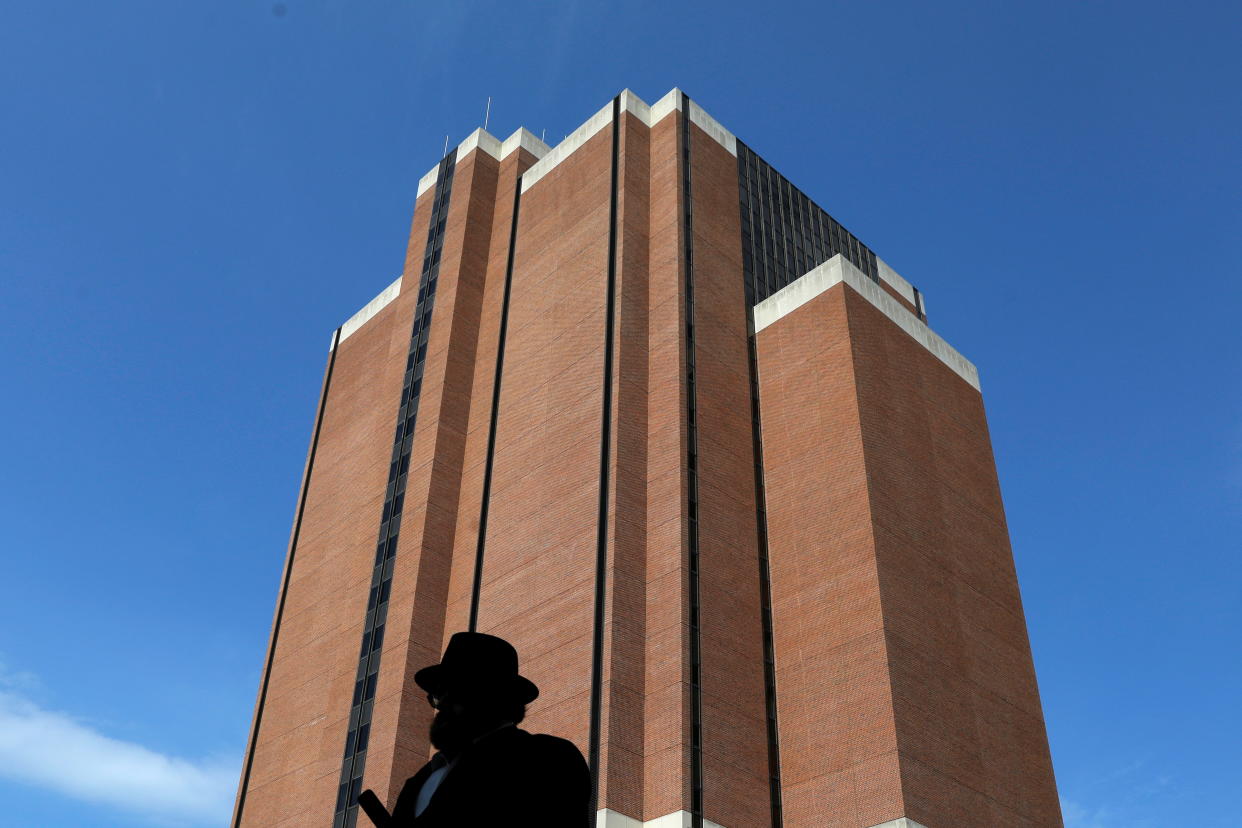The 'lingering uncertainties' for Johnson & Johnson in talc legal fight
Johnson & Johnson (JNJ) is trying to resolve tens of thousands of claims from plaintiffs who say the talc in its iconic baby powder once contained asbestos that caused ovarian and tissue cancers.
So far J&J's stock has held steady during the nearly two-year-long legal battle. That resilience is about to be put to the test.
A US bankruptcy court is expected to rule by Aug. 2 for the second time on whether the healthcare conglomerate can use a controversial bankruptcy strategy to dispose of roughly 100,000 claims.
The company is now offering a settlement of $8.9 billion, more than four times its offer in 2021, as it continues to negotiate with claimants and their lawyers.
Some claimants don’t want the settlement and accuse the company of "manufacturing" financial distress to protect its assets.
The company claims most support it. In fact, J&J global head of litigation Erik Haas told analysts on July 20 that 60,000 claimants were in favor while 40,000 were opposed.

"The numbers right now show that the vast majority of claimants support the proposed plan," Haas said.
The numbers cited last week by J&J were below the 75% of claimants that, by law, must approve the proposal for a bankruptcy court to grant it. The company previously told analysts it could meet that threshold.
'Lingering uncertainties'
Analysts say the current settlement proposal of $8.9 billion shouldn't significantly impact the multibillion-dollar company, if it wins approval.
But a denial would mean J&J would have to defend itself on a case-by-case basis in the courts, which would potentially be an expensive and time-consuming proposition that would likely hang over the company for years.
The litigation presents "lingering uncertainties" for J&J, Goldman Sachs analysts said in a note last week after the company reported its second quarter earnings.
"Should the bankruptcy not proceed, then cases will be decided by the tort system, which could prolong timelines for this issue to achieve visible resolution."
JPMorgan Chase analysts in a separate note after J&J earnings last week said the talc settlement progress was "one of the most important drivers" of the company's stock in 2023.
"There remains a fairly high level of skepticism on both the validity of the bankruptcy structure as well as the ability to get enough of the remaining plaintiffs to agree to the proposed terms," the analysts wrote.
Individual talc cases that have been decided by a judge or jury have resulted in big awards for plaintiffs.
A California jury earlier this month ruled J&J had to pay $18.8 million to a man who said talc caused cancer in tissue surrounding his heart. In two prior cases it was ordered to pay $120 million to a Brooklyn, N.Y. couple and $2.21 billion to a group of women in Missouri.
The company is appealing two of these cases and planning to appeal the third. J&J denies that its discontinued talc-based powder ever caused harm.
In 2020, it settled 1,000 talc claims for $100 million. The following year it prevailed in an Illinois case alleging $50 million in damages.
The Texas two step
J&J has so far dealt with the risk using a controversial strategy known as the "Texas Two-Step."
The tactic taps the US bankruptcy system to wall off company assets from costly litigation. The measure was put to the test when a three-judge panel for the Third Circuit Court of Appeals denied J&J’s first attempt.
Critics argue that the strategy subverts the bankruptcy process by making its protections available to solvent companies.
The first step began in October 2021 when Johnson & Johnson’s parent company formed the subsidiary LTL Management, transferring its existing 38,000 talc claims to LTL. At the time, J&J offered $2 billion to fund LTL to cover the outstanding claims.
Two days later came the second step. LTL filed for Chapter 11 bankruptcy in a federal court in North Carolina, triggering an automatic stay that protected J&J's assets from judgments reached and claims filed prior to the bankruptcy.
The matter was later transferred to a federal bankruptcy court in Trenton, N.J., where in February 2022 US bankruptcy judge Michael Kaplan approved LTL's bankruptcy petition. He also approved the request of talc claimants to fast-track an appeal of his decision to the Third Circuit Court of Appeals.
Nearly a year later in January, the appellate court unanimously overruled Kaplan, dismissing LTL's petition and concluding that the single-purpose entity sought out bankruptcy for an invalid purpose.

According to the panel, LTL wasn’t financially distressed — a condition required for bankruptcy — because an agreement with J&J gave it access to at least $61.5 billion to manage and settle talc claims.
To get around the Third Circuit's sticking point, J&J then amended LTL's financing agreements, boosted its settlement proposal to $8.9 billion, and re-petitioned LTL for bankruptcy. It also did away with LTL's access to the $61.5 billion.
The move triggered another stay, and another request from talc litigants to disallow LTL's bankruptcy. This is what Kaplan, the US bankruptcy court judge, will again be asked to consider.
If the case goes forward, there will be an Aug. 22 court hearing on LTL's request to approve its revised reorganization plan. On Monday, the US Trustee, an arm of the Justice Department tasked with preserving integrity of bankruptcy proceedings, objected to that request.
The Trustee, which also objects to LTL’s second attempt at bankruptcy, said LTL prematurely solicited its creditors to vote on the arrangement, given that the court rulings on whether the bankruptcy is valid could make the matter moot.
A 'de minimus' impact
If J&J is allowed to deal with its claims in bankruptcy court for $8.9 billion, a settlement would likely have a "de minimus" impact on its bottom line, SVB Securities analysts said in April.
That's because of potential insurance covering the talc liabilities and tax deductions that help offset settlement costs, according to SVB analysts.
"We estimate the amount net of taxes" would be $7.1 billion "and this is before potential partial insurance coverage. J&J expects that there will be some insurance coverage, although there are ongoing disputes with insurers on this topic."
J&J declined to comment on the existence or extent of insurance covering its talc claims.
Up until 2005, it carried third-party liability insurance that could potentially cover litigation and settlement expenses. In later years, J&J self-insured against product liability claims through its Vermont subsidiary, Middlesex Assurance Company.
Alexis Keenan is a legal reporter for Yahoo Finance. Follow Alexis on Twitter @alexiskweed.
Follow Yahoo Finance on Twitter, Facebook, Instagram, Flipboard, LinkedIn, and YouTube
Find live stock market quotes and the latest business and finance news
